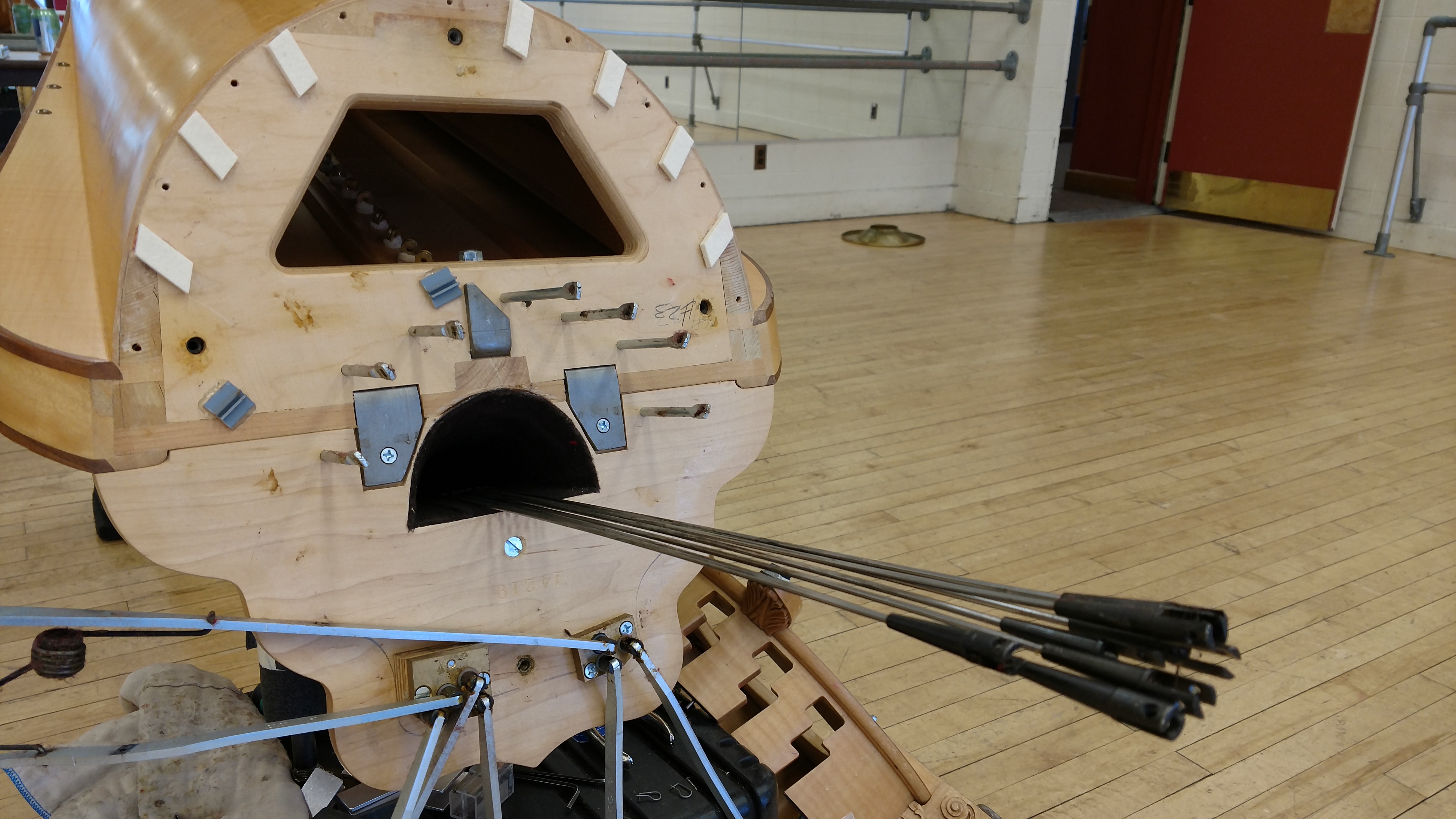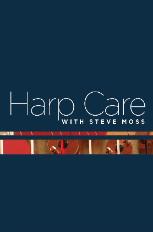What the heck is a P.R.T.B.? It stands for pedal rod tubing buzz. It is a sympathetic vibration caused by a harp’s pedal rod tubing assembly, the system of parts inside a pedal harp’s column that connect the pedals at your feet with the mechanism above your head. It can cause very prominent unwanted vibrations, primarily in the 5th and 6th octaves, when they are played loudly.
Why Do They Happen?
P.R.T.B.s happen when either: 1.)one of the pedal rods or 2.)some part of the tubing assembly vibrates along with the playing of one or more of the of the strings. Since the rods and tubing are as long as some of the harp’s longest bass strings, these vibrations can be rather loud. They can develop because lubrication that was originally added to the tubing dries up, leaving more room for vibration, or the tubing itself widens over time, causing the same result. There have been a variety of different materials used for tubing over the years. All of them can develop buzzes, the reasons why can vary.

A harp’s pedal rods can start to vibrate sympathetically along with the strings.
Diagnosing a P.R.T.B.
P.R.T.B.s are almost always heard on 5th Octave B or below. The most common one by far is the 5th Octave A flat. 5th Octave G and 6th Octave C are also more frequent troublemakers, but these buzzes can happen throughout the lower register. If you hear a loud, low rumbling sound when playing in this range, it may well be a P.R.T.B., especially if it only occurs in one particular pedal position on a given string. Playing the offending string as well as the one an octave below it may make the tubing buzz more prominent. Another way to diagnose a tubing buzz is to play the offending string plus an adjacent one. If this causes a pulsating sound in the buzz, chances are it’s the tubing.
It’s also important to try and rule out loose linkages in the mechanism, which can cause similar buzzes. If your harp’s mechanism needs reriveting, it may cause buzzes similar to those in the tubing. Linkage buzzes, in general, are higher pitched and more metallic than tubing buzzes.
Does it Mean Something’s Broken?
No. It is merely an unwanted sound. You have to play pretty hard before hearing a tubing buzz. I often hear them when the harp’s owner does not, because I play very hard when I regulate, in order to detect potential problems. A tubing buzz is not a sign that anything is damaged or about to break. If it doesn’t bother you, or you only hear it when you play really hard, you can ignore it without worries.

The pedal rods need to be disconnected from the mechanism before the buzz can be fixed.
Fixing a P.R.T.B.
Eliminating a P.R.T.B. is a labor-intensive project, as it is necessary to disconnect all the pedals and springs, as well as disconnect the pedal rods from the mechanism. In some cases, the tubing assembly has to be removed as well. On newer instruments, it is often possible to cure this buzz by pushing grease into the tubing to fill any voids that have defeloped between the rods and the tubes. This is often called lubricating or “greasing” the rods. Lubricant is used, though the point of the excercise is not actually to increase lubrication, but to cut down on free space inside the tubing. If this alone doesn’t work, sometimes removing the tubing assemly itself and adding some additional padding to fill any voids between it and the harp column can do the trick. In other cases, it is necessary to replace the entire tubing assembly, though the pedal rods can generally be reused. Regardless of which solution is used, this is a job best left to a technician. Because of the disassembly and reassembly involved, it is time consuming (technician-speak for “expensive”). Another reason why, if this buzz isn’t bothering you too much, you can just ignore it.
Make Sure it’s not the Room
Last month I wrote about ruling out sympathetic vibrations coming from somewhere in your harp’s environment, not the harp itself. If you’ve already followed those instructions and made sure your room is innocent of all charges, and the buzz you’re stalking is in the lower register, see if you can determine if it is, in fact, the dreaded P.R.T.B.


0 Comments